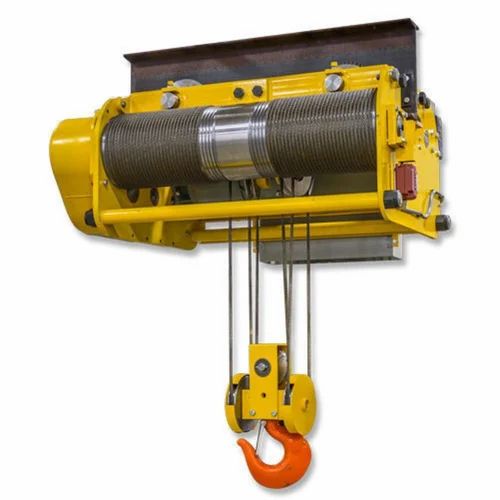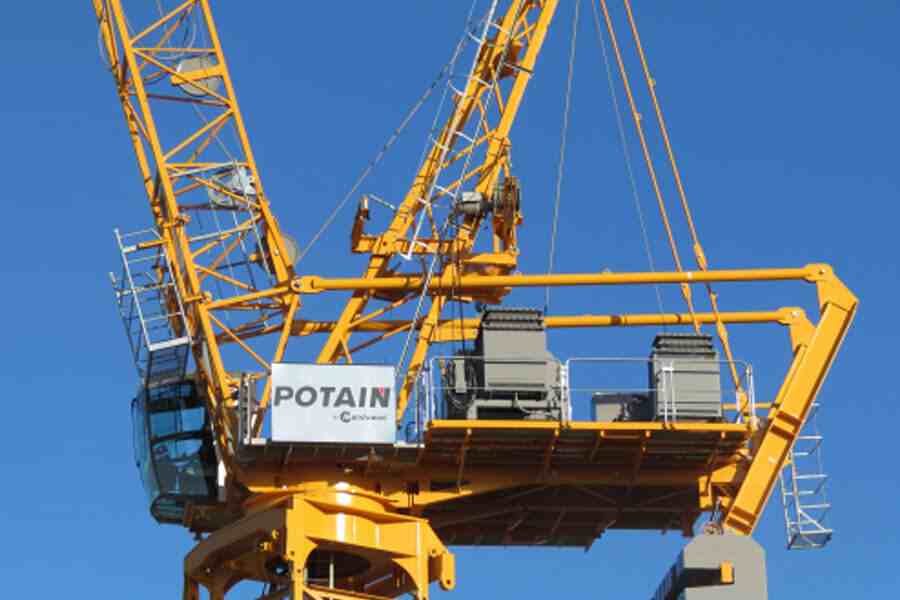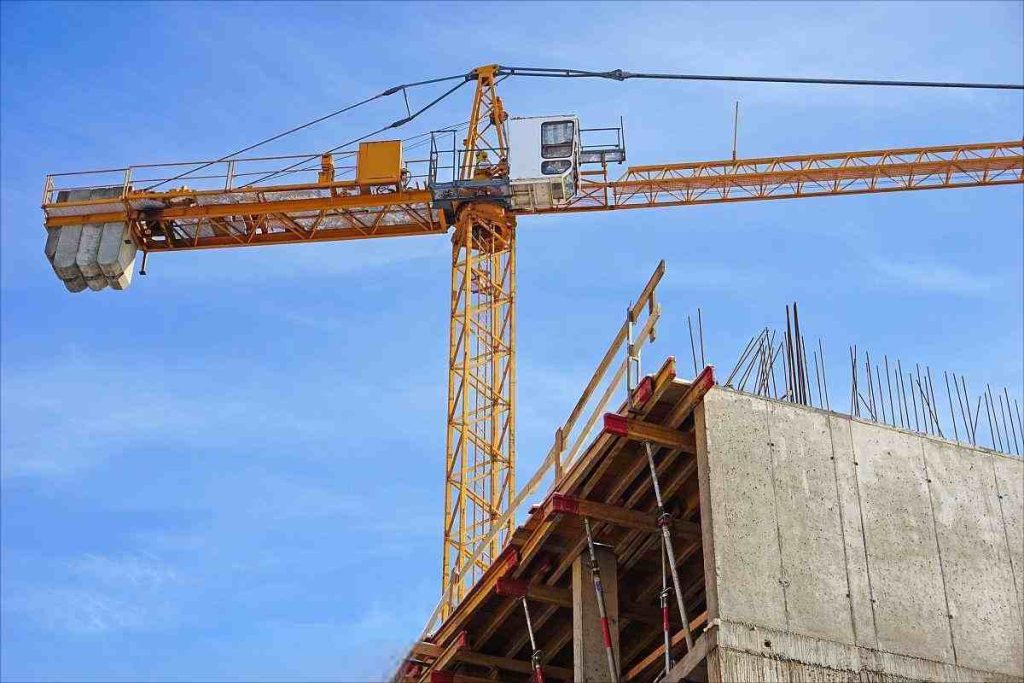Tower cranes are among the most essential pieces of equipment on any large-scale construction site. These towering machines handle heavy loads, operate at significant heights, and function in complex, high-risk environments. One of the critical components ensuring their safe and precise operation is the limit switch.
But how many limit switches does a typical tower crane use? Why are they necessary, and what types exist? In this article, we’ll explore the different types of tower crane limit switches, their functions, and why they’re crucial for maintaining construction site safety.
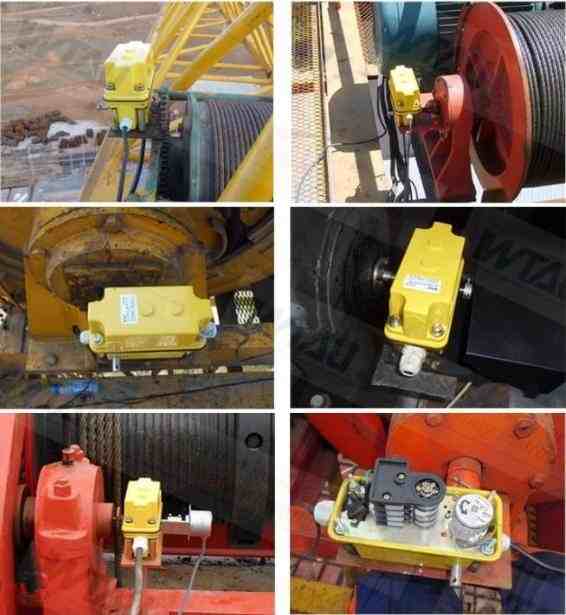
What Is a Tower Crane Limit Switch?
Limit switches are key electromechanical safety devices for tower cranes, which control the crane to operate within a predetermined safety range by detecting specific motion limits (such as position, pressure or motion state). When triggered, it sends a signal to stop movement or initiate a safety protocol, effectively preventing the crane from accidentally overtravel, overload, collision or structural damage. In essence, the limit switch is like a safety checkpoint, ensuring that the tower crane components always work within their design limits, providing vital protection for equipment and personnel safety, and maintaining a safe and efficient working environment.
How Many Limit Switches Are Typically Used in a Tower Crane?
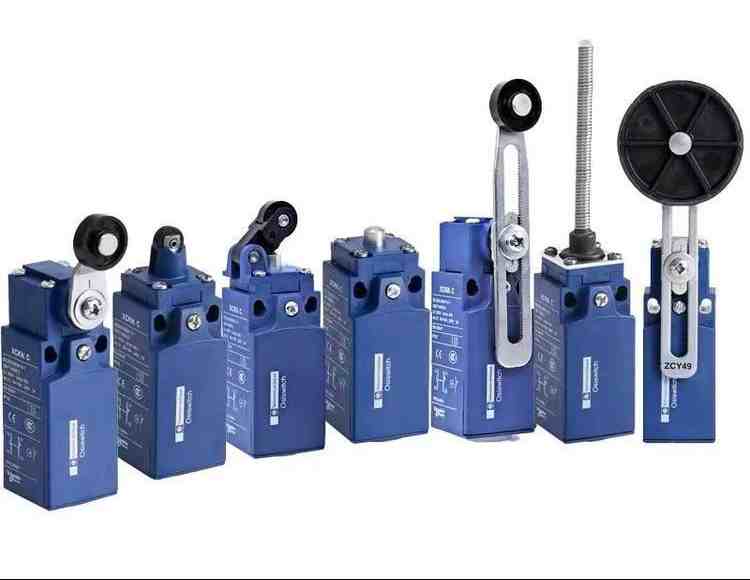
Most tower cranes are equipped with 5 to 7 limit switches, depending on their type, size, and operational complexity. These switches are strategically distributed across critical motion zones, such as hoisting, trolley travel, slewing, and luffing (in luffing jib cranes), to prevent unsafe movements. While the number may vary slightly for smaller or specialized cranes, each switch serves a vital role in addressing specific risk vectors. Advanced tower cranes may also feature additional switches for wind speed control or anti-collision systems, ensuring a comprehensive safety mechanism tailored to the crane’s design, whether it’s a hammerhead, luffing jib, or self-erecting model.
Main Types of Tower Crane Limit Switches
Let’s look at the most common tower crane limit switch types and their roles in operational safety:
• Tower Crane Hoisting Limit Switch
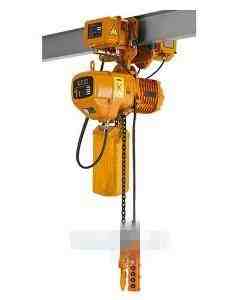
This is arguably one of the most critical limit switches on a tower crane. Its primary function is to prevent the hook block and load from being lifted too high and colliding with the boom or other parts of the crane structure. Two lifting limit switches are typically used, mounted on the hoist drum or hoist mechanism.
Upper lifting limit switch: This switch activates when the hook block reaches its maximum allowed upward travel. Once triggered, it cuts off power to the hoist motor in the upward direction, preventing over-lifting.
Lower lifting limit switch: Although not as important as the upper limit switch, some cranes are also equipped with a lower lifting limit switch. This prevents the wire rope from being completely unwound from the drum, which could result in damage to the wire rope and hoist mechanism. Two lifting limit switches are typically used:
• Tower Crane Trolley Limit Switch
This switch is located on the trolley track and ensures that the trolley does not exceed its running track or hit the end of the tower. It ensures that the load moves safely horizontally on the boom. When the tower crane trolley limit switch is triggered, it pauses the movement of the trolley to avoid structural damage or derailment.
• Slewing (Rotation) Limit Switch

Slewing refers to the horizontal rotation of the crane jib around the tower. The slewing limit switch is essential for preventing the crane from over-rotating beyond its designated working range, which could otherwise lead to collisions with nearby structures or other cranes on-site. It is especially crucial in situations where multiple cranes are operating simultaneously or where the crane is working near buildings or other structures. This switch plays a key role in collision avoidance and overall site coordination.
• Load Moment or Overload Limit Switch
This critical safety device works in conjunction with the crane’s Load Moment Indicator (LMI) system to prevent lifting loads that exceed the crane’s rated capacity at a given radius. While not a traditional position-based limit switch, it continuously monitors load weight and boom angle via sensors. If the load moment surpasses the preset limit, the switch is triggered, halting hoisting or outward trolley movement to avoid further risk. Modern systems often integrate this function with electronic LMI displays to provide operators with real-time overload warnings.
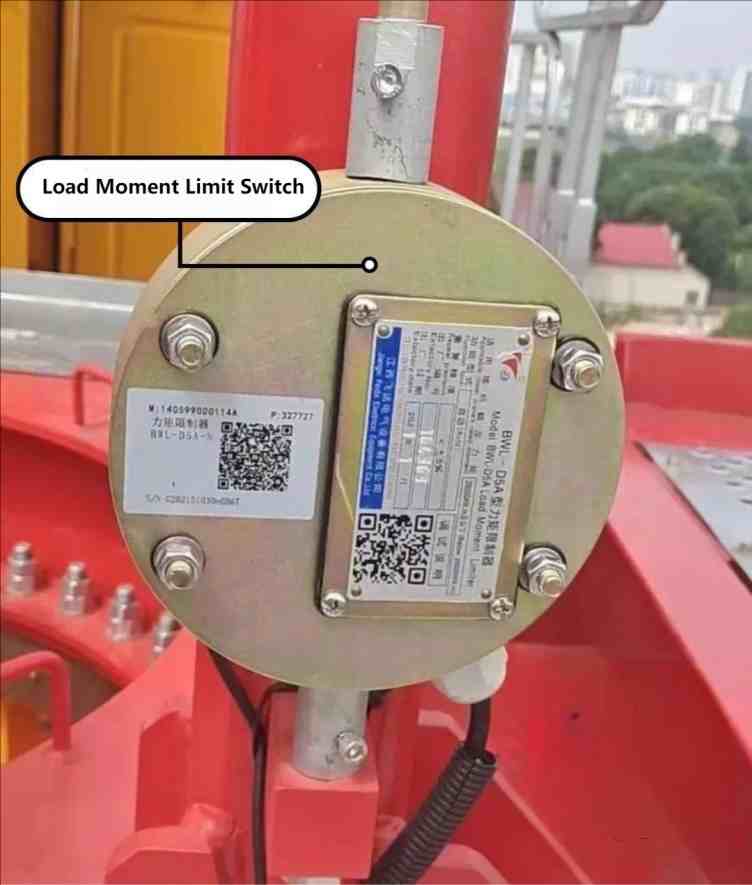
• Luffing (Boom) Limit Switch
Specific to luffing jib tower cranes, this switch restricts the angle of the boom movement, ensuring it doesn’t rise or fall beyond safe limits. It prevents the boom from going too high (risking collision or tipping) or too low (causing overloading or loss of control).
Why Multiple Limit Switches Are Essential for Safety
One tower crane limit switch alone is insufficient. The 5-7 limit switches create a multi-layered, interdependent safety system:
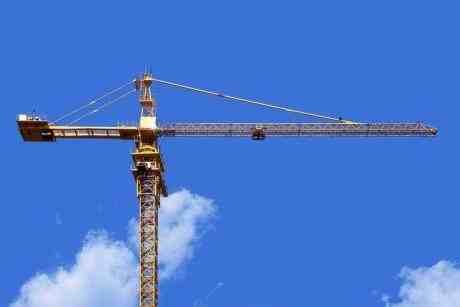
Comprehensive Hazard Coverage: Each switch addresses distinct failure modes – height, travel, rotation, load, angle. Together, they cover the major catastrophic risks.
Redundancy: While not direct duplicates, the system provides overlapping protection. For example, the Load Moment Limiter prevents overload regardless of boom position, while the hoisting and trolley limits prevent specific mechanical failures.
Defense-in-Depth: Multiple switches create sequential barriers. An alarm from one switch gives the operator a chance to correct; an automatic cut-off from another acts as the final, physical barrier to disaster.
Preventing Cascade Failures: A failure in one area (e.g., trolley running off) can lead to secondary failures (overload, structural collapse). Multiple limits prevent this domino effect.
Regulatory Compliance: International standards (like ISO 10245, ASME B30.3, EN 14439) and national regulations mandate the presence and regular inspection/testing of these specific limit devices.
Maintenance Tips and Common Issues
A tower crane limit switch is only as good as its maintenance. Neglect turns a safety device into a liability:
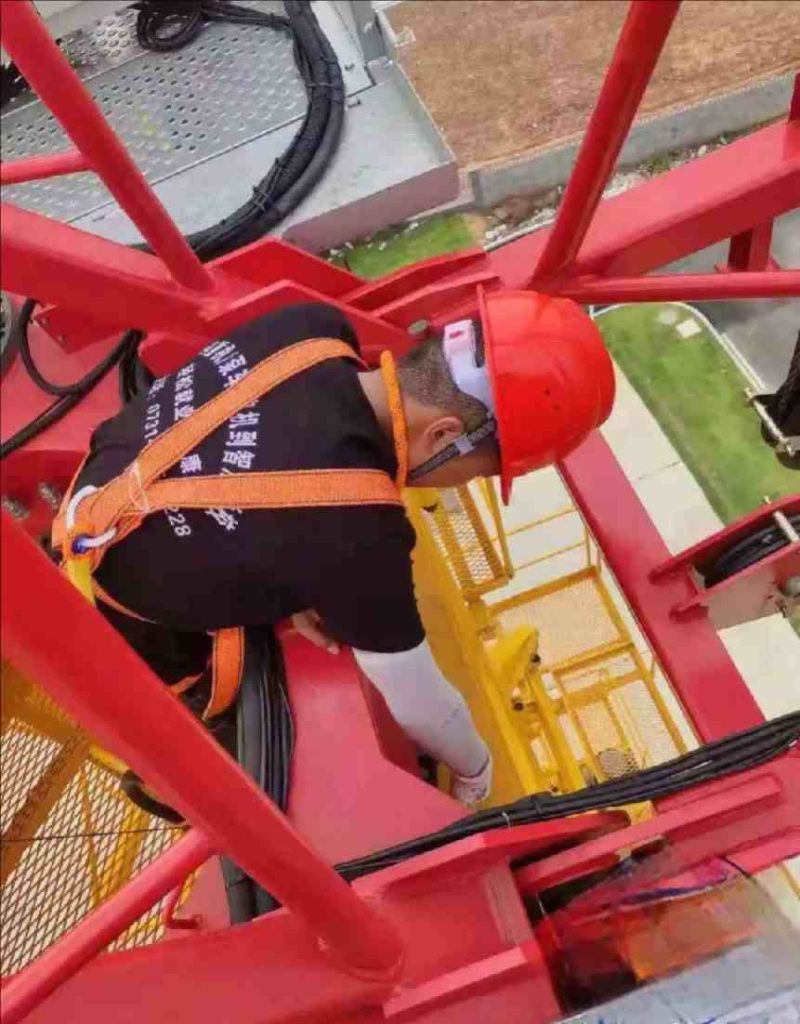
Critical Maintenance Tasks:
- Daily Pre-Use Checks: Operators must test critical limits (especially hoist up/down, alarms) function before starting work.
- Regular Visual Inspections: Look for physical damage, corrosion, loose wires, obstructions, and proper switch engagement mechanisms.
- Scheduled Functional Testing: Regularly (weekly/monthly) test each limit under no-load conditions to verify alarms and cut-offs activate correctly.
- Professional Calibration (Especially LML): Load Moment Limiters require precise, periodic calibration (often quarterly/annually or per manufacturer/regulatory requirements) by certified technicians using calibrated weights. This is non-negotiable.
- Cleaning & Lubrication (Mechanical Switches): Prevent buildup of dirt, grime, or ice that can jam mechanisms. Lubricate per manufacturer specs.
Common Limit Switch Problems:
- Physical Damage: Impact from loads, weather, or debris.
- Corrosion & Moisture Ingress: Especially in harsh environments.
- Wiring Faults: Broken, frayed, or disconnected wires; poor connections.
- Misalignment: Switches knocked out of position, preventing proper actuation.
- Worn/Broken Mechanical Components: Springs, levers, cams.
- Sensor Failure (LML): Faulty load cells, angle sensors, or radius sensors.
- Improper Calibration (LML): Leads to dangerous false readings (allowing overloads or causing unnecessary cut-outs).
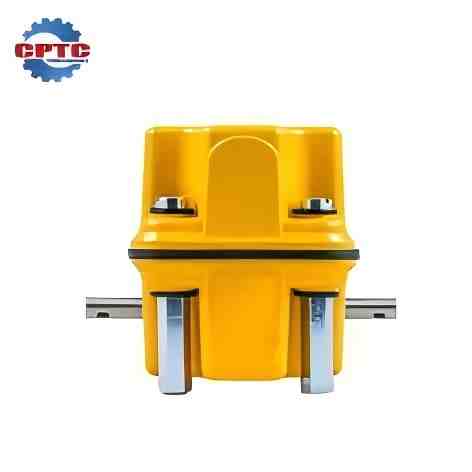
In Summary
Limit switches are essential to tower crane safety, helping monitor key movements and prevent accidents. Common types—hoisting, trolley, slewing, load moment, and luffing—ensure the crane operates within safe limits, protecting both people and equipment. Regular inspection and maintenance are crucial to their effectiveness. For operators and maintenance teams, understanding these switches is key to maintaining a safe and efficient construction site.

